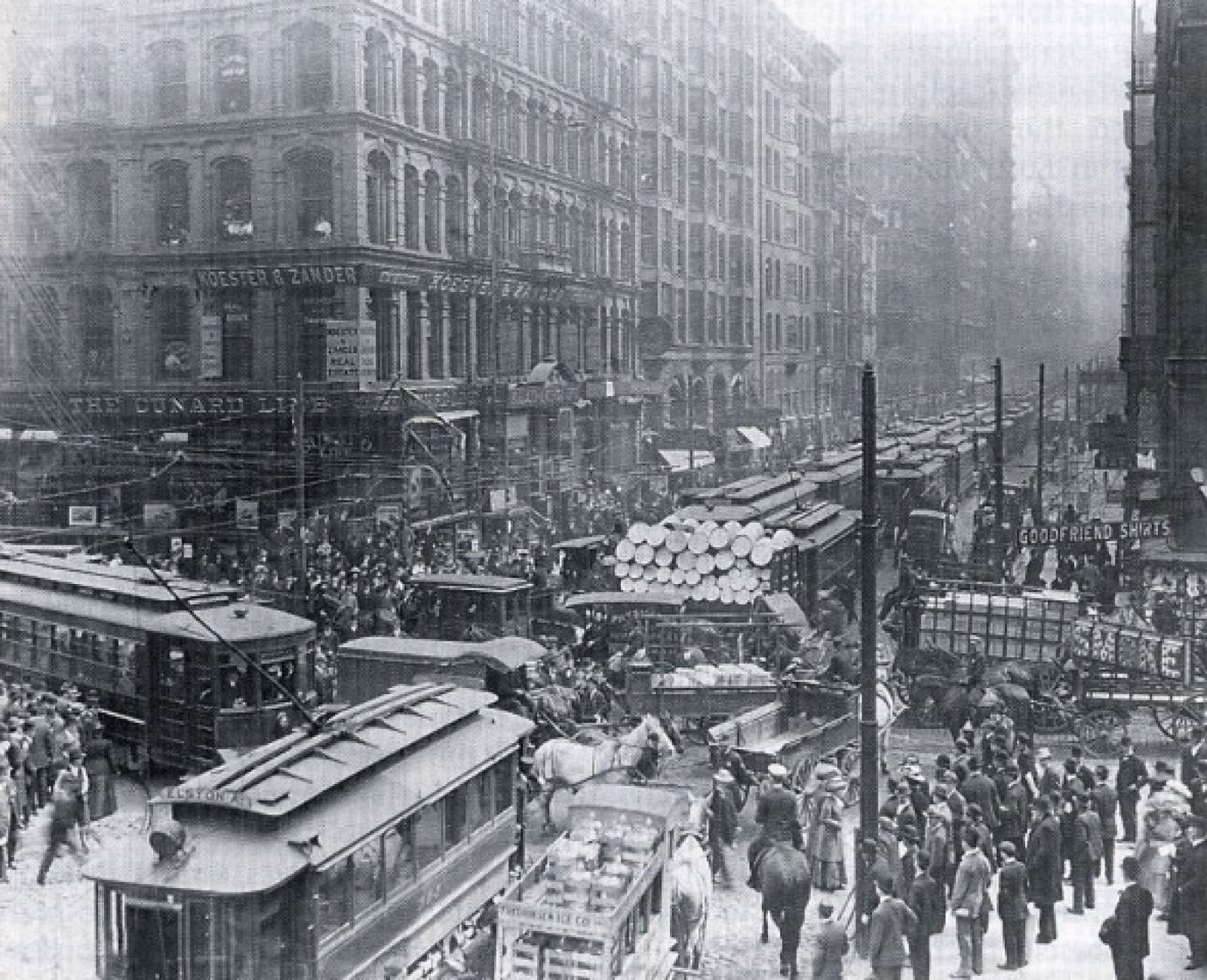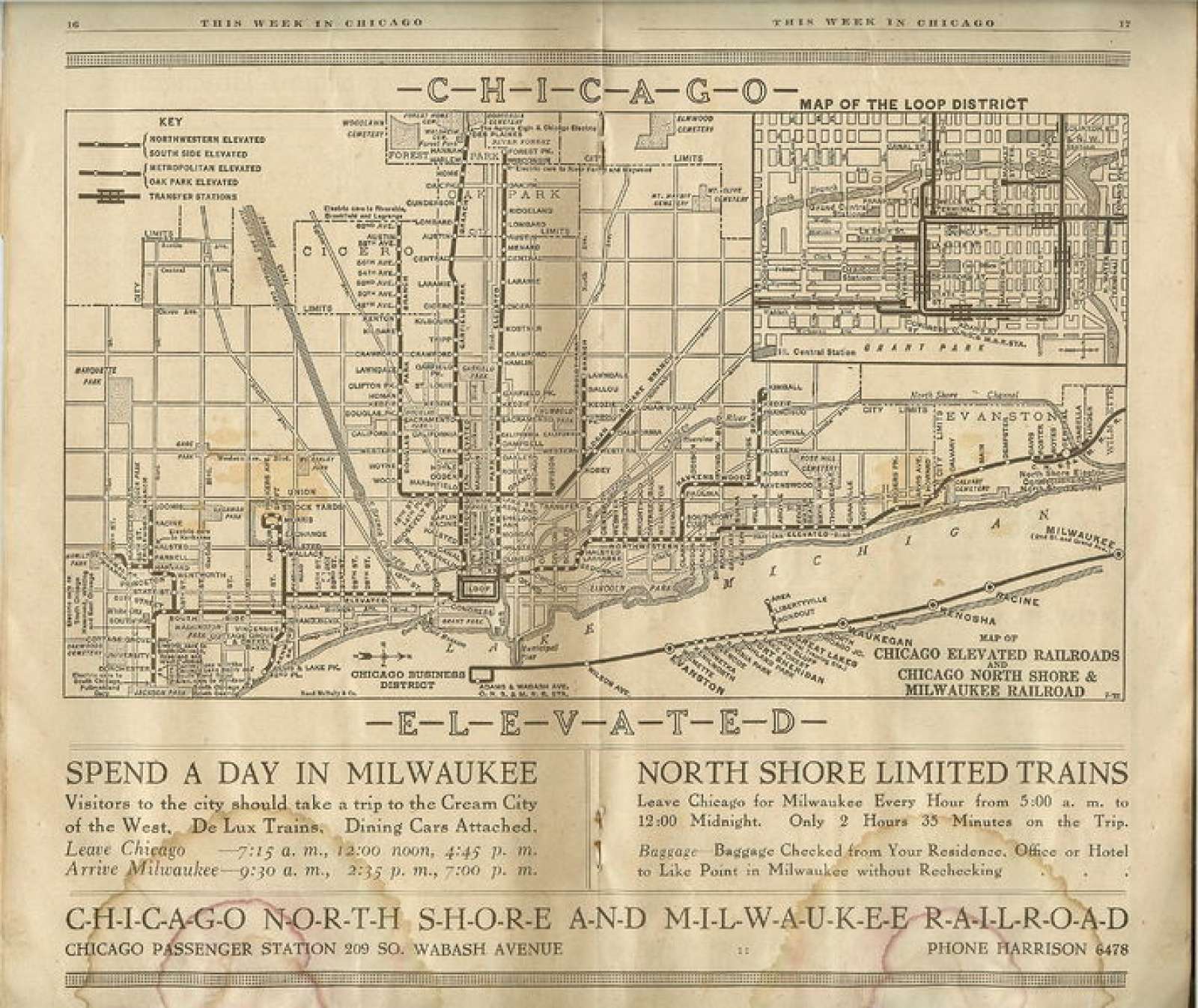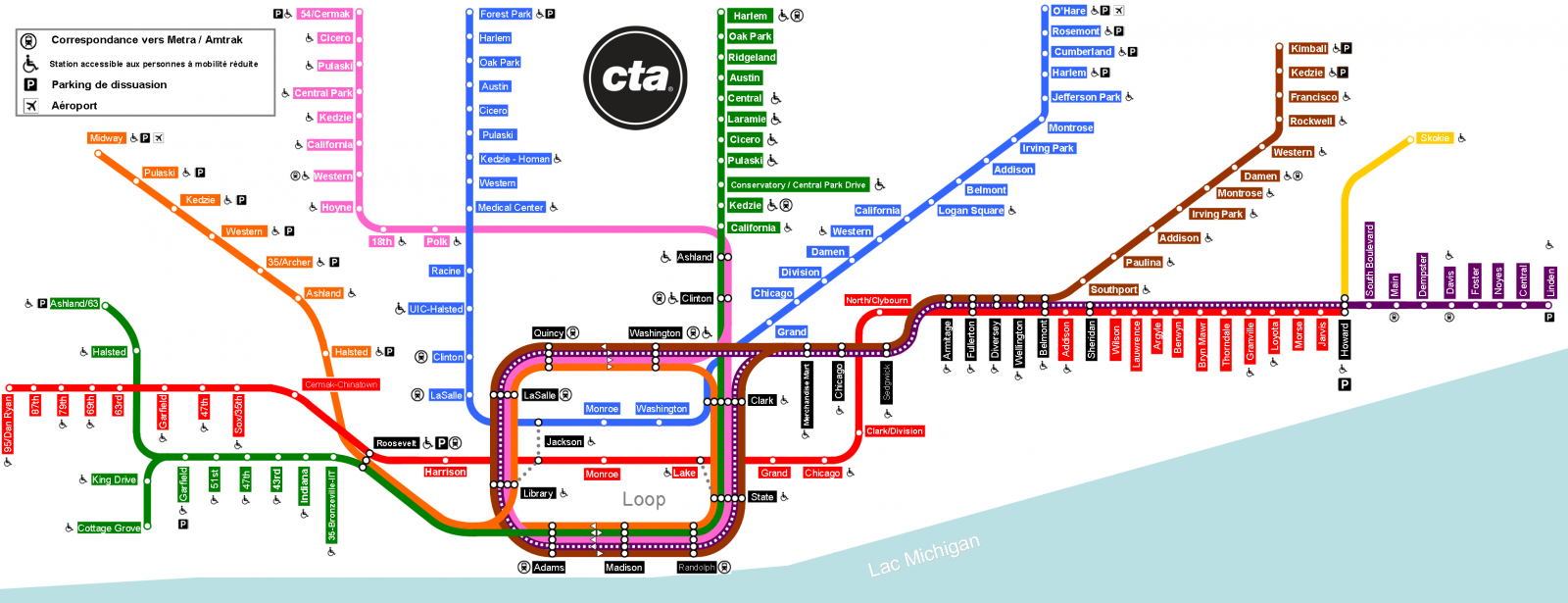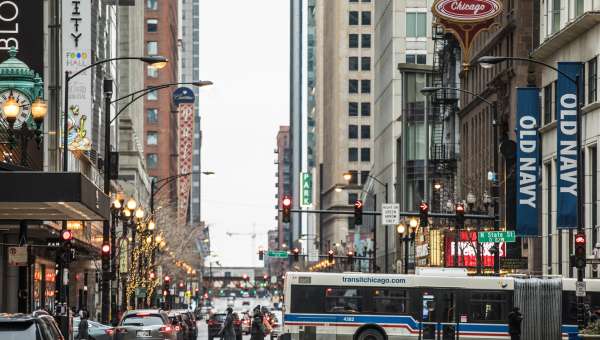Posted 3 years ago in Then and Now
3 MIN READ - Ever wonder what your commute would be like if you took a different rail line? Venture outside your daily commute and virtually "ride the rails" with the CTA. While you're at it, read up on the history of one of the greatest public transit system's in the country!
When Chicago officials were considering building a rail system, elevated tracks appeared to be the right choice, as subways were too expensive. And so the first 'L' train (then Chicago and South Side Rapid Transit Railroad) was built in 1892, and its inaugural journey took place on June 6, spanning 3.6 miles in 14 minutes.
At that point, the ‘L’ was just an ordinary steam powered train on raised tracks. That changed quickly with the invention of the third-rail electrical power system at the 1893 World’s Columbian Exposition in Jackson Park. The electric-powered train designed to transport guests around the fair was, remarkably, the first instance of the very same technology used on the Chicago 'L' today and around the world.
With the advent of this third-rail electric technology, the potential stock of the 'L' skyrocketed, and the second and third ‘L’ trains – Lake Street Elevated and Metropolitan West Side Elevated – were quickly constructed in 1893 and ’95. Despite this rapid expansion, however, the ‘L’ had yet to serve the central business district, due to regulations requiring a majority of owners’ permission to build downtown.
Enter magnate Charles Tyson Yerkes. Yerkes believed that the ‘L’ was destined to extend downtown, and eventually decided that he would be the man to do it. Sure enough, through clever financial maneuvering, Yerkes was able to earn a majority approval and construct much of the Union Loop by 1897. A few years later, service to the fourth ‘L’ – Northwestern Elevated – was connected to the Loop, and by 1921 amid multiple connections and extensions in all directions the ‘L’ assumed a shape much like that of the ‘L’ today.

Then:*
Chicago was the fastest-growing city in the country during the late 19th century, and as downtown became increasingly congested with horses, carts and carriages, people began to realize they needed a more efficient means of transportation.

Since the 1920's, the ‘L’ has undergone significant changes and expansions, including the State and Dearborn subway connections in the 30’s and 40’s, the creation of the Chicago Transit Authority (CTA) in 1945, construction on the Dan Ryan and Congress Expressway medians, retirement of wooden cars and creation of air-conditioned cars, the extension to O’Hare and Midway airports, and the discontinuation of on-board conductors, among many others.
Now:
Now, before the COVID-19 pandemic impacted ridership, the eight lines of the Chicago ‘L’ span 224.1 miles and serve on average 620,471 people per weekday, with 63,339 of those boardings in the Loop alone.

The elevated tracks, voted one of the seven wonders of Chicago by Tribune readers in 2005, have become a Chicago icon with worldwide recognition, with the downtown Loop at the center of it all.
A recent documentary "Chicago by 'L'" featuring Geoffrey Baer on WTTW, underscores the beauty and interconnectivity of the public transit lines of Chicago.
Projects like the Red Line Extension Project to the underserved South Side of Chicago, often raise some degree of controversy with the public. But controversy has followed the 'L' throughout its history. In 1897, the New York Academy of Medicine warned that the noise and disturbance from elevated tracks “prevented the normal development of children” among other dangers, and throughout its construction police and community leaders spoke against it for its potential to collapse or electrocute passengers.*
Most of the public concerns today are far better grounded in reality. Still, as it was in the 1890's, it's hard to say just what the future of the ‘L’ really is. Possibilities include Orange and Yellow line extensions, and an additional line to the currently 'L'-less southeastern part of the city.
If one thing’s for sure, though, the Chicago ‘L’ – noisy, wonderful, iconic, colorful, innovative, convenient or inconvenient – isn’t going away anytime soon.
*For more information, see: Borzo, Greg. The Chicago "L." Arcadia Publishing: Chicago, IL (2007). Print.



